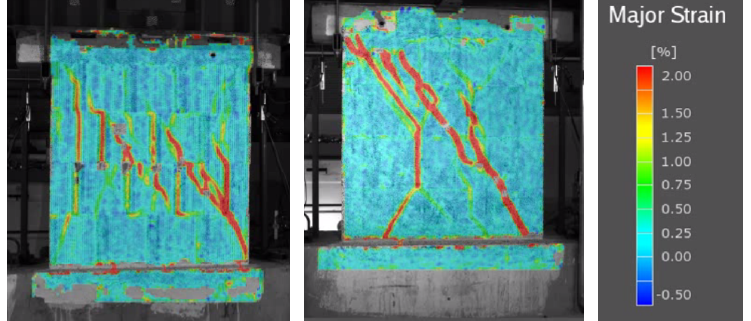1 Researcher, Department of Structures, Slovenian National Building and Civil Engineering Institute, Ljubljana, Slovenia, matija.gams@zag.si
2 Professor, Department of Structures, Slovenian National Building and Civil Engineering Institute, Ljubljana, Slovenia, miha.tomazevic@zag.si
ABSTRACT
The influence of different types of units and mortars on seismic resistance of masonry walls has been studied. Hollow clay and autoclaved aerated concrete (AAC) masonry units have been used for the construction of testing walls. The units were either laid in general purpose mortar and thin layer mortar or glued together by polyurethane (PU) glue. Altogether ten walls have been tested as fixed at both ends by subjecting them to constant vertical and in-plane acting cyclic shear load. No significant difference in main parameters of seismic behavior, such as resistance, displacement and energy dissipation capacity has been observed in the case of the clay block masonry laid in both, general purpose and thin layer mortar. However, gluing the hollow clay units with PU glue significantly changed the behavior. In the case of AAC masonry, replacing the thin layer mortar with PU glue had little effect on the seismic performance.
KEYWORDS: masonry, seismic resistance, mortars, cyclic shear
555.pdf



